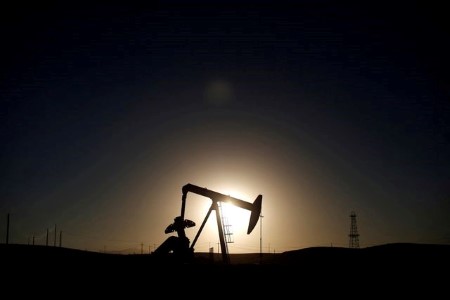




Philippines Trade Update: Trade trajectories trend along
 DOWNLOAD
DOWNLOAD

Policy Rate Updates: Double cut finale
 DOWNLOAD
DOWNLOAD

Monthly Economic Update: One for the road
 DOWNLOAD
DOWNLOAD


Oil settles lower as China fears, rate hikes counter tight US supply

Aug 16 – Oil prices settled lower on Wednesday despite a large drawdown in US crude stocks as investors weighed worries about China’s embattled economy against expectations of tighter supply in the United States.
Brent crude futures fell USD 1.44, or 1.7%, to settle at USD 83.45 a barrel while US West Texas Intermediate crude (WTI) fell USD 1.61, or 2%, to USD 79.38.
Both benchmarks fell more than 1% in the previous session to their lowest since Aug. 8.
US crude oil inventories fell by nearly 6 million barrels last week on strong exports and refining run rates, despite crude production rising to its highest since the coronavirus pandemic decimated fuel consumption, Energy Information Administration data showed on Wednesday.EIA/S
However, product supplied of gasoline fell by 451,000 barrels per day in the week as peak driving season draws to a close.
“This week’s draw simply offset last week’s unexpected 6-million-barrel build and looking ahead to next week, we can see a sharp decline in exports that will likely prompt a counter-seasonal crude stock build,” said Jim Ritterbusch, president of Ritterbusch and Associates LLC in Galena, Illinois.
Oil also fell along with equities after the release of the Federal Reserve’s minutes showed central bank officials were divided over the need for more interest rate hikes at their last meeting.
Higher interest rates increase borrowing costs for businesses and consumers, which could slow economic growth and reduce oil demand.
China’s sluggish economy remained in focus, after retail sales, industrial output and investment figures failed to match expectations, fueling concern over a deeper, longer-lasting slowdown.
July activity figures have prompted concerns that China may struggle to meet its growth target of about 5% for the year without more fiscal stimulus, and calls for authorities to take decisive steps.
Without giving details, a cabinet meeting chaired on Wednesday by Premier Li Qiang said China would continue to introduce policies aimed at boosting consumption and promoting investment.
Both the OPEC+ group, comprising the Organization of the Petroleum Exporting Countries and allies, and the International Energy Agency (IEA) are banking on China – the world’s biggest oil importer – to galvanize crude demand over the rest of 2023.
While dismal Chinese economic indicators have been causing headaches, providing a justified excuse for investors to go on the defensive, the global oil balance shows no signs of loosening up, PVM analyst Tamas Varga said, citing the latest numbers on US crude inventories.
Supply cuts by Saudi Arabia and Russia have pushed up oil prices over the past seven weeks. Figures published on Wednesday showed that Riyadh’s crude exports fell to their lowest since September 2021.
(Additional reporting by Natalie Grover in London, Arathy Somasekhar in Houston, and Trixie Yap in Singapore; editing by Muralikumar Anantharaman, Jason Neely, Tomasz Janowski, and Josie Kao)
This article originally appeared on reuters.com





 By Reuters
By Reuters